NOTE: Be sure to check your owner's manual regarding towing requirements.
Flat towing involves towing a vehicle with all four wheels on the ground. This method is popular among RV owners and those needing to tow a secondary vehicle without a trailer. The key to successful flat towing is understanding which vehicles suit this method. Not all cars can be flat towed due to various design and transmission factors. So, what vehicles can be flat towed? Typically, vehicles with manual transmissions and certain four-wheel-drive vehicles with transfer cases that can be placed in neutral are ideal for flat towing. It's vital to consult the owner's manual or a professional to ensure your vehicle is compatible with flat towing.
Blue Ox Tow Bars: Your Partner in Safe and Efficient Flat Towing
When it comes to flat towing, having the right equipment is just as important as choosing the right vehicle. This is where Blue Ox Tow Bars comes into the picture. As a trusted towing solutions and accessories provider, we offer an array of products designed to make flat towing safe, easy, and efficient. Our Flat Towing Combo Kits are specifically tailored to meet the diverse needs of our customers, whether you're an individual RV owner or a business managing a fleet of trucks. Blue Ox Tow Bars ensures that every product meets the highest standards of quality and reliability, giving you peace of mind on the road.
Vehicles with Automatic Transmission
Vehicles with automatic transmissions are a top choice for flat towing. Their suitability for this towing method stems from the ability to place them in neutral, allowing the wheels to roll freely without engaging the engine. This fundamental characteristic makes them well-suited for flat towing, as it avoids any damage to the drivetrain.
One of the key advantages of flat-towing vehicles with automatic transmissions is their convenience. RV owners and travelers can easily prepare the vehicle for towing by shifting it into neutral, attaching the necessary towing equipment, and hitting the road. There's no need to worry about complex procedures or potential complications.
However, it's important to note that not all vehicles with automatic transmissions can be flat towed without limitations. To ensure a safe and hassle-free flat towing experience, it's crucial to consult the owner's manual of the specific vehicle model you intend to tow. The owner's manual provides valuable information about flat towing procedures, any restrictions, and any additional steps that may be required, such as disengaging the parking brake or keeping the ignition key in a particular position.
Furthermore, some vehicle manufacturers may recommend specific towing speeds or distance limitations when flat towing with an automatic transmission. Adhering to these recommendations is essential to prevent damage to the towed vehicle or transmission issues.
Vehicles with Manual Transmission
Flat towing is not exclusive to vehicles with automatic transmissions; vehicles with manual transmissions are also excellent candidates for this towing method. Just like their automatic counterparts, manual transmission vehicles can be put in neutral, allowing for easy and safe towing behind an RV or towing vehicle.
One of the primary advantages of flat-towing vehicles with manual transmissions is the simplicity of the process. RV owners and travelers can quickly prepare the vehicle for towing by shifting it into neutral, attaching the necessary towing equipment, and hitting the road. There's no need to worry about complex procedures or potential complications.
Many manual transmission vehicles are designed with flat towing in mind, making them a reliable choice for those who prefer this towing method. Manufacturers often provide specific instructions and guidelines in the owner's manual for flat towing, ensuring that RV owners and travelers can tow their vehicles safely and confidently.
It's important to consult the owner's manual of the specific vehicle model you intend to flat tow to ensure you follow the manufacturer's recommendations and any specific procedures they may recommend. Additionally, some manual transmission vehicles may have speed or distance limitations when flat towing, so adhering to these guidelines are crucial to prevent any potential issues.
Four-Wheel Drive (4WD) and All-Wheel Drive (AWD) Vehicles
The compatibility of 4WD and AWD vehicles for flat towing depends on several factors, including the vehicle's manufacturer, make, and model. Some 4WD and AWD vehicles come equipped with a transfer case that allows the wheels to be disengaged from the drivetrain, making flat towing possible. However, this capability is only universal across some 4WD and AWD vehicles.
To determine whether your specific 4WD or AWD vehicle can be flat towed, it is imperative to consult the owner's manual provided by the manufacturer. The owner's manual will provide comprehensive information on flat towing procedures, any restrictions, and any additional steps or precautions that need to be taken to ensure safe towing.
In some cases, 4WD and AWD vehicles may require specific preparations before flat towing, such as disengaging the transfer case or placing the vehicle in a particular mode. Failing to follow these guidelines can damage the drivetrain or transmission.
Furthermore, it's crucial to remember that not all 4WD and AWD vehicles are created equal, and individual models may have varying requirements for flat towing. Therefore, thorough research and adherence to manufacturer recommendations are essential when considering flat towing with a 4WD or AWD vehicle.
Towing Capacity and Safety
Selecting the right vehicle for flat towing involves more than choosing one with a compatible transmission or drivetrain; you must also consider the towing capacity and safety aspects. Exceeding the recommended towing capacity can lead to safety hazards, vehicle damage, and potential accidents, making it a crucial factor to prioritize.
Towing capacity refers to the maximum weight a vehicle can safely tow without compromising its performance or safety. It's essential to determine the towing capacity of your motorhome or towing vehicle and ensure that the vehicle you plan to tow falls within these limits. Exceeding the towing capacity can result in reduced control, braking difficulties, and increased wear and tear on the towing vehicle.
To ensure a safe and smooth flat towing experience, consider the towed vehicle's weight and the additional weight of towing equipment, such as flat towing combo kits, tow bars, and supplemental braking systems. These accessories can add significant weight to the overall towing setup and must be factored into your calculations.
Regular maintenance of both the towing vehicle and the vehicle being towed is also critical for safety. Before each trip, perform a thorough pre-tow checklist that includes inspecting tires, brakes, lights, and all towing equipment. Address any maintenance issues promptly to prevent breakdowns or safety issues while on the road.
Non-Compatible Vehicles
Non-compatible vehicles can encompass a wide range of categories, including certain automatic transmission vehicles that cannot be safely flat towed due to the risk of transmission damage. Additionally, some manual transmission vehicles may have limitations that make flat towing unsuitable, such as those with sensitive clutch systems or specific gear requirements for towing. It's essential to research and confirm the balanced towing compatibility of your vehicle before attempting this towing method.
To identify non-compatible vehicles, consult the owner's manual provided by the vehicle manufacturer. The owner's manual will typically offer explicit guidance on whether the vehicle can be flat towed and any procedures or precautions that must be followed. Ignoring these guidelines can lead to severe damage to the towed vehicle or safety issues while on the road.
It's also important to remember that some vehicles may have been modified or customized to render them non-compatible for flat towing. Modifications like lift kits, oversized tires, or aftermarket transmission alterations can significantly impact a vehicle's suitability for flat towing. Therefore, it's essential to assess factory specifications and any modifications made to the car before deciding whether it can be safely flat towed.
Towing Equipment and Accessories
Flat towing combo kits, tow bars, base plates, and supplemental braking systems are among the necessary components to consider. These accessories help secure the towed vehicle and contribute to the overall safety and ease of the towing process.
Flat towing combo kits are comprehensive packages that often include all the essential components needed for flat towing, such as a tow bar, base plate, safety cables, and wiring harness. These kits are designed to streamline the setup process, ensuring all components are compatible and meet safety standards. Using a flat towing combo kit can simplify the towing process and reduce the risk of equipment-related issues.
Tow bars play a central role in flat towing, connecting the towing vehicle to the towed vehicle. It's crucial to select a tow bar that matches the towing capacity of your setup and consider features like ease of connection and durability. Additionally, base plates are essential for securely attaching the tow bar to the towed vehicle, ensuring a stable connection throughout the journey.
Supplemental braking systems are another critical component of flat towing, particularly for larger and heavier towed vehicles. These systems provide additional braking power to the towed vehicle, helping to maintain safe stopping distances and reducing wear on the towing vehicle's brakes. Many jurisdictions have legal requirements for supplemental braking systems when towing heavy loads, so it's important to check local regulations.
Legal Regulations and Requirements
Different states and countries may have specific rules and guidelines regarding flat towing, and it's essential to be well-informed and compliant to ensure a safe and trouble-free journey.
One of the key aspects of legal regulations for flat towing is understanding the speed limits imposed on towing vehicles. Many jurisdictions set specific speed limits for vehicles engaged in towing, and these limits may vary from standard speed limits. It's essential to be aware of and adhere to these towing-specific speed limits to avoid potential fines and ensure road safety.
Another critical aspect of legal requirements involves lighting and visibility. Flat-towed vehicles typically require additional lighting to make them visible to other drivers, especially during nighttime or adverse weather conditions. This may involve the use of towed vehicle lighting kits or magnetic towing lights to ensure that brake lights, turn signals, and taillights are functional and clearly visible.
Additionally, some areas may have specific safety measures or equipment requirements for flat towing. This could include mandates for safety chains, breakaway systems, or supplemental braking systems, especially when towing heavier loads. To ensure full compliance, it's essential to understand these regional requirements before embarking on a flat towing journey.
In some cases, crossing state or national borders may introduce new legal considerations, such as weight limits and vehicle registration requirements. To avoid potential complications and penalties, you should check the regulations of each jurisdiction you plan to travel through and ensure that your flat towing setup complies with their specific requirements.
Visit Blue Ox Tow Bars: Your Destination for Top-Quality Towing Solutions
We are your trusted towing solutions and accessories source, offering top-quality products and expert advice. Whether you need Flat Towing Combo Kits, tow bars, or other accessories, we have everything you need for a seamless towing experience. Visit us to explore our wide range of products and benefit from our expertise in towing solutions. Remember, when it comes to towing, Blue Ox Tow Bars is the name you can rely on for quality, reliability, and efficiency.

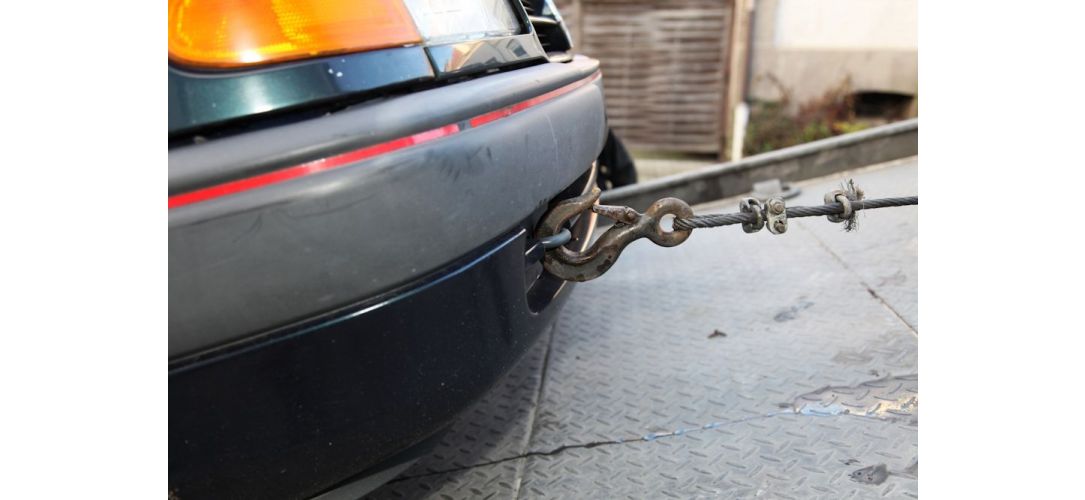

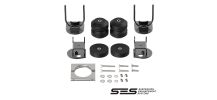
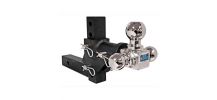
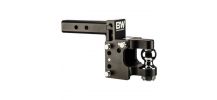
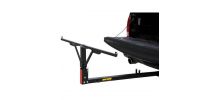
 Rigid Hitch Inc.
Rigid Hitch Inc.
